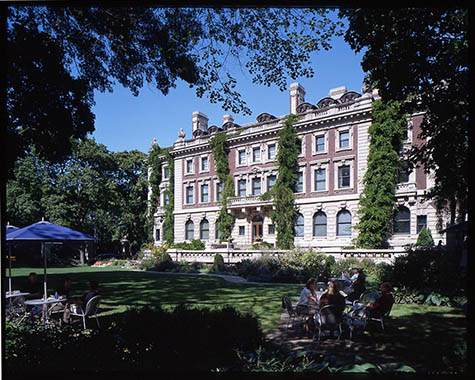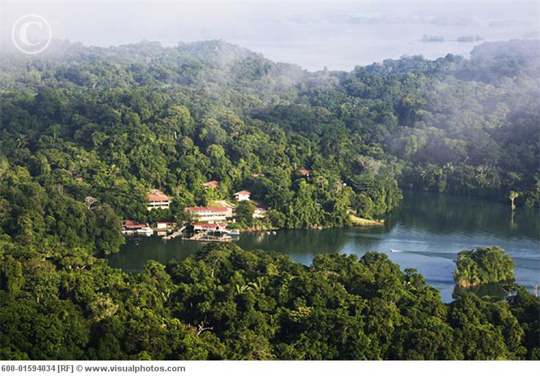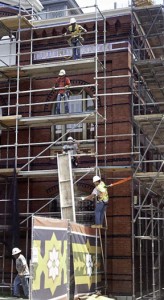From the Secretary: Top 10 Reasons I get excited about facilities
After the earthquake I could have titled this article “there’s a whole lotta shakin’ going on,” but we are not going to let a little earthquake damage get in the way of some big plans we have. I know that some would say only a civil engineer like me could get excited about buildings, but bear with me. We are on our way to a billion dollar Smithsonian makeover in the next five years. So, with apologies to David Letterman, here are the top 10 reasons I‘m so enthusiastic right now.
Number 10. Large and lovable sea and land mammals will be happy. The National Zoo will open its remarkable new Seals and Sea Lions exhibit, giving new homes to seven sea lions and five seals. Additionally, Phase II of the Elephant Asia Trails project will be completed, providing a renovated outdoor habitat for endangered Asian elephants. These are great new facilities for the animals – but humans will love them too.
Number 9. The Smithsonian looks great in green—and saves green in the process. All of our new construction will be done with an eye toward sustainability. Nowhere will that be more evident than the state-of-the-art new Mathias Lab at the Smithsonian Environmental Research Center. The lab will apply for a Leadership in Energy and Environmental Design Gold certification, and the building should use at least 37 percent less energy than a comparable building certified at the basic LEED level. It will reclaim, clean and re-use wastewater in toilets, irrigation and fire suppression. Reconstructed wetlands will help with storm-water management and runoff. An HVAC system will be supplied by sizable geothermal well fields. The lab’s roof will also be equipped for installing 650 solar panels that could provide almost 10 percent of the building’s electricity.
Sustainability isn’t limited to SERC’s Mathias Lab, as the Seals and Sea Lions Center, Elephant Trails and National Museum of African American History and Culture will all be LEED Gold-Certified. Throughout the Mall, cisterns will capture water for re-use, and new construction will include energy-efficient heating and air conditioning. These initiatives will save natural resources and money, a win-win proposition.
Number 8. The National Postal Museum is delivering. Thanks to the generosity of William H. Gross, the National Postal Museum is making a big move. Its galleries are presently located below the ground floor, but a new 12,000-square-foot gallery and Welcome Center will be located in the historic lobby of the Postal Square Building on Massachusetts Ave. The new $8 million gallery, which will feature a number of ultra-rare stamps, is expected to open in 2013.

Artist's rendering of the "Connect with U.S. Stamps" exhibit in the William H. Gross Stamp Gallery, courtesy of Smith Group.
Number 7. We take stewardship of collections seriously. Clearly, one of our strengths at the Smithsonian is our world-class collection of artifacts, fossils, artwork and memorabilia. Over the past five years we have invested over $300 million in new and upgraded collection facilities to house them. Pennsy Drive, featuring the Book Conservation Lab and Smithsonian Institution Libraries Imaging Center, is one example of our new approach, but there is more to come.
In April, the Air and Space Museum opened its spectacular new Phase II addition to the Udvar-Hazy Center with the Mary Baker Engen Restoration Hangar, allowing the public a unique opportunity to see classic aircraft being restored. For collections, there is a lesser known but equally impressive Phase II story – the 237,000 square foot state-of-the-art archives and collections space. There is now room for the ever-expanding assembly of NASM artifacts as well as many of the existing collections now housed at the Garber facility in Maryland.
Of course, our buildings in Washington aren’t the only ones being modernized. The Cooper-Hewitt, National Design Museum in New York also is undergoing a dramatic transformation of expansion and renovation. A new collections center in New Jersey will allow us to grow Cooper-Hewitt’s collection tremendously, enhance our abilities to protect those collections with cutting-edge conservation labs, and digitize the collections with a photography studio. Additionally, renovations to the museum’s main site at the Carnegie Mansion will create 60 percent more gallery space. I am confident that the public will be amazed at the new and improved Cooper-Hewitt when it reopens in fall 2012.

A youngster experiments with the Tessellations puzzle at The Lemelson Center’s Invention at Play exhibition.
Number 6. The National Museum of American History says Horace Greeley was right. Construction is going west, or at least to the 120,000-square-foot West Exhibition Wing. The museum’s latest renovation will include new galleries, interior public plazas and a Hall of Music for live performances. A new panoramic window and entrances to the outside terrace will connect visitors to the National Mall and the future National Museum of African American History and Culture. Finally, a new Education Center and new Invention and Innovation gallery in the Lemelson Center will allow more people of all ages to explore and learn.
Number 5. And now for something completely different at Front Royal. On June 29, the National Zoo’s Smithsonian–George Mason Mason Global Conservation Studies Program in Front Royal, Va., broke ground on its new living classroom project. The partnership trains future conservationists using an interdisciplinary, interactive approach. Scientists and educators from the Zoo, Mason, and other institutions teach students from around the world. Once the new expansion is complete in fall 2012, SCBI Front Royal will be able to accept eight times the number of students they had when they began in 2008 – which makes us want to celebrate with a silly walk.
Number 4. The Smithsonian Tropical Research Institute celebrates a century of scientific discovery with a brand new building. At STRI in Panama, the new 41,000-square-foot Gamboa Laboratory Facilities will house offices and state-of-the-art labs for tropical science, and support the study of lowland moist tropical forests at STRI’s Barro Colorado Island research site. The facility will open in 2013 or early 2014.
Number 3. Education takes a front seat at the National Museum of Natural History.
Our founder, James Smithson, charted the course for the Institution by identifying our mission as “the increase and diffusion of knowledge.” Many of our museums are creating learning labs to better meet this goal. The Smithsonian American Art Museum, the Hirshhorn Museum and Sculpture Garden and the National Museum of American History are all embracing these modern tools of technology. The National Museum of Natural History is part of this educational vanguard. By creating a 12,000 square foot education and learning facility, NMNH will emphasize special programs that encourage science participation using state-of-the-art digital tools and hands-on engagement with collections. The new educational hub will bring fresh vitality to science learning and strengthen the public’s connection to science and the natural world.
Number 2. Arts and Industry leaps off life support with renewed vigor. When it opened in 1881, the Arts & Industries building was the only national museum. Its original purpose was to house the knowledge of the world, a formidable challenge. A&I’s much-needed facelift will allow it to renew its purpose as a “gateway to learning,” both about the Smithsonian and the world at large. It will offer stories from units such as the Smithsonian Astrophysical Observatory or STRI, that aren’t always told on the Mall, and it will be a beta site for testing innovative education ideas. The project will include a new roof, windows and partial structural updates, as well as an underground connector between A&I and the Quad for mechanical storage. The final restoration will retain its original sense of openness, airiness, and connectedness. To check out the progress on our webcam, click here.
Number 1. A dream comes true. Long in the making, the National Museum of African American History and Culture is scheduled to break ground in 2012 and open in 2015. The museum will display collections and establish programs about African Americans’ crucial roles in shaping America through their contributions to art, history, culture and science. Exhibitions will document the history of African American life from the days before the Revolutionary War to today.

The National Museum of African American History and Culture, Image courtesy of Freelon Adjaye Bond/SmithGroup
We are making these sweeping changes and improvements to our facilities because they will enrich the experiences people have at the Smithsonian – those of us who work in these historic buildings, and our visitors who come to us to learn and be inspired. Better facilities will open new possibilities for our research and scholarship, enliven our exhibitions, and create a more welcoming face for our visitors, so we can serve as a better steward of natural resources, tell more compelling stories, and protect our precious collections for future generations.
Posted: 19 September 2011
- Categories:











